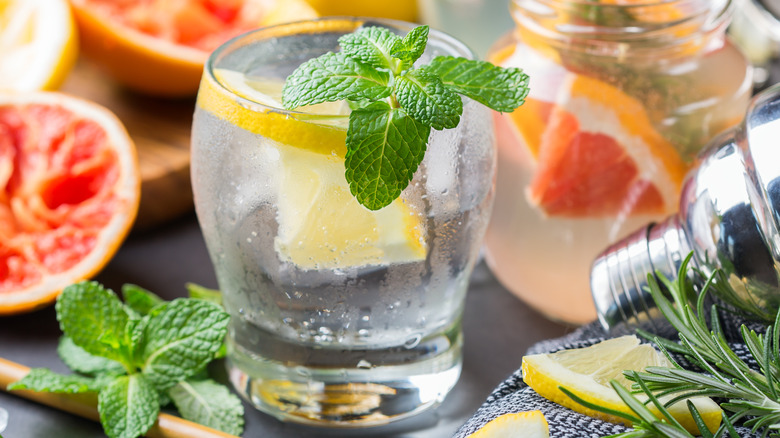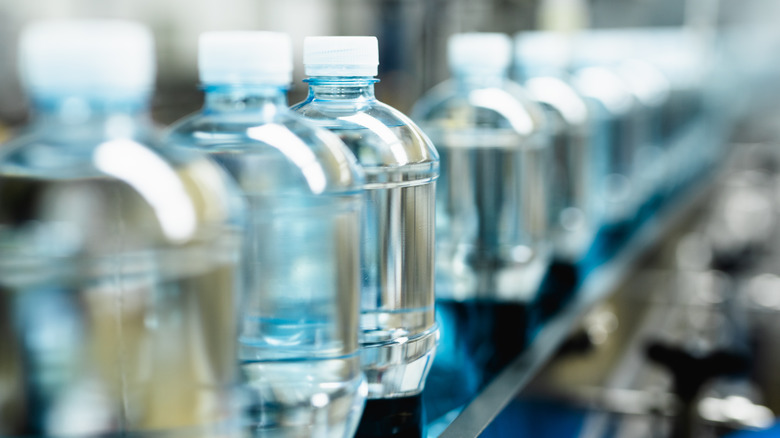The Origin Of Seltzer Dates Back To The 1700s
Does carbonated water ever feel spicy? Turns out there's scientific evidence to back up the sensation. Fizzy drinks activate the same pain receptors as horseradish and mustard, states the University of Southern California (USC) News. And although we've quickly grown to love the bubbly prickles (including when it is mixed with booze), the choice of still or sparkling water is a relatively modern invention.
Before grabbing carbonated waters from the shelf for consumption, bathing in them was the fashion. Throughout the 1700s, wealthy Europeans and later Americans journeyed to spa towns for not only entertainment, and but also for their alleged healing properties. Even the word seltzer is derived from just such a geographical destination — Niederselters, Germany. This tiny village bottled and sold naturally carbonated water from its spring and the name stuck around to be applied to other bubbly waters, explains Elemental.
Yet, in today's terminology, the original bottled German water is sparkling mineral water which is seltzer that contains carbonation which is added artificially, reports Eater. To get today's flavored carbonated craze, someone needed to create the artificial version. So crack open a can, and refresh; let's break down the origins of seltzer.
Englishman William Brownrigg first synthesized carbonated water in 1740
Seltzer's first, yet less noted, inventor was an Englishman William Brownrigg. After visiting a German spa town, he was intrigued by the presence of gas in the mineral water. He then used carbon dioxide from a mine, he aerated water with gas, creating the first seltzer, reports Mitte.
Brownrigg never published his findings, and sparkling water bubbled away exclusively from springs for several more decades. Then, in 1767, a philosopher and scientist named John Priestly sampled water mixed with gas emitted from fermenting grain in a neighboring brewery. To his surprise, the result tasted like mineral spa waters, so he sought to recreate the result at home. Using a contraption that involves an inverted glass, bowl of water, pig bladder, and sulfuric acid, the first replicable seltzer was born. Soon the vessel was redesigned by Johann Jacob Schweppe, of the enduring seltzer brand, and carbonated water stuck around, via The Atlantic. Over a century later, Schweppes still ranks as one of the tastiest, and it seems the thirst for bubbles is here to stay.

